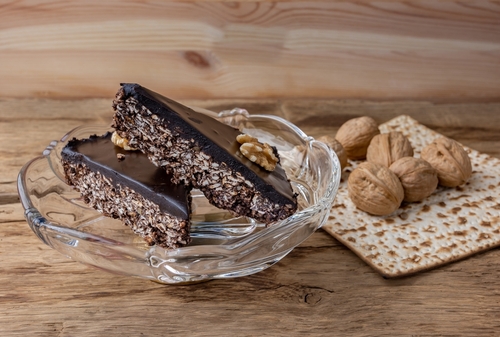In this week’s Torah Portion, Parshat Tzav, Hashem instructs Moshe to command Aharon and his sons regarding their jobs as kohanim (priests). They are taught about the korbanot (sacrifices) that they brought in the Mishkan (Tabernacle), including more details regarding the korbanot described in last week’s Parsha. A fire would be kept burning on the mizbeach (altar) all the time in order to burn either the whole animal, the veins and fat of the animal or a handful of the flour from the different korbanot. The kohanim learn that they may eat the meat and flour of some of the karbanot, while some others are eaten by the person who brings the offering, with only some of it going to the kohanim. The holy meat must be eaten by someone who is tahor (pure) in the holy place and that specified time. The rest of the Parsha describes the initiation process of the kohanim, in which they remained in the Mishkan for 7 days. Moshe gathered all of the Jewish people and dressed Aharon and his sons in the special bigdei kehunah, preistly garments, detailed in the previous Torah Portions. He anointed them with the special anointing oil, together with the Mishkan and its vessels. Moshe brought the first korbanot in the newly dedicated Mishkan.
This week’s Parsha lends itself to some fun treats! Candy lips or teeth (my local candy store was out of lips) represent Moshe teaching the kohanim about their jobs in the Mishkan as well as the instructions regarding who would eat which part of the korbanot. Atomic Fire Balls symbolize the fire that was always burning on the altar and the korbanot that were consumed by the fire. Candy watches can represent the special time when someone may eat specific karbanot as well the 7 days that the Kohanim were to stay in the Mishkan after being anointed. Yellow wax bottles represent the anointing oil used to initiate the kohanim as well as the Mishkan and its vessels. Our family favorite, Bubble Monsters, can symbolize the gathering of the Jewish People to witness the anointing of the kohanim, the Mishkan and its vessels, as well as Aharon and his sons who became kohanim in this week’s Parsha. Finally, animal crackers can represent the many animal sacrifices described in this week’s Parsha, including the first korbanot brought in the Mishkan by Moshe. Do you have other ideas for Parsha treats this week? Please share them in the comments below!
With warm wishes for a meaningful and happy Passover and a Shabbat Shalom,
Shayna Levine-Hefetz


